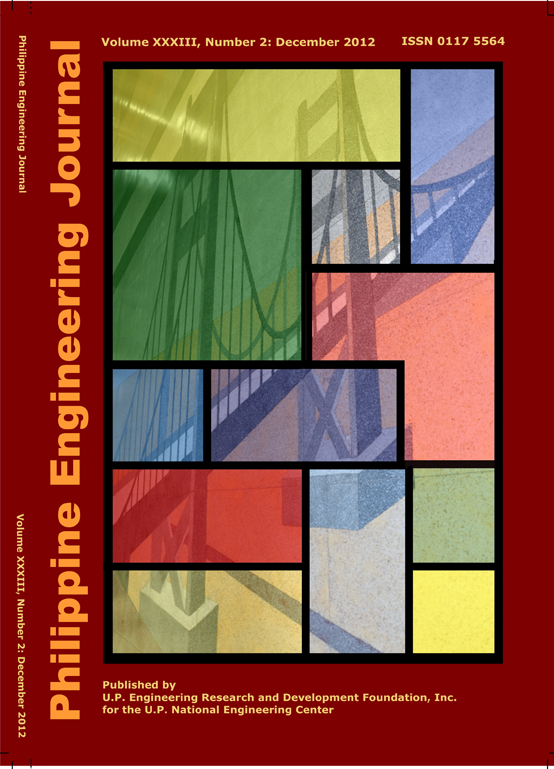THREE-DIMENSIONAL NONLINEAR TIME-HISTORY ANALYSIS OF TWO-STOREY CONCRETE WALL-TYPE STRUCTURE
Abstract
A two-storey concrete wall-type structure is analyzed using three-dimensional nonlinear time-history analysis. Ground acceleration records of the magnitude 7.2 Kobe earthquake are used to simulate a scenario earthquake from the 67 km West Valley fault in Metro Manila. Ansys® software is used in the analysis to enable the modeling of concrete inelasticity: due to both concrete cracking and concrete crushing, using Solid65 concrete element. Using this element, smeared reinforcement is also introduced in the model. Results of simulation show that the failure mode is governed by tension cracks in the concrete adjacent to the corners of openings in the walls, especially in the absence of additional diagonal reinforcement thereat. It is also shown that concrete crushing failure is not critical for the structure analyzed, even in the absence of special boundary elements. Comparison of the result of simulation using different ground acceleration records scaled up to the same level shows that both stresses and deflections are higher for the record that has a predominant period of 0.34sec which is relatively nearer that of the natural period of structure of 0.15sec. The effect of frequency content of the input ground motion, which may be attributed to the soil condition, is evident in this study. There is a need for further research on more appropriate ground acceleration inputs for simulations like this study. The computational effort of about 10 hours using 1.83 GHz Intel Core Duo processor and 2.49GB RAM for a 10-sec simulation at 0.01sec interval is too much for most engineering design offices. While the computational effort for a 16-sec simulation at 0.02 sec interval for a small structure as in this paper could be reduced from 8 hours to 2.5 hours using a much powerful HP Proliant ML150 G6 server with 2.26 GHz, 8-core processor and 48 GB RAM, this computer is still not the norm for ordinary engineering design office. Aside from considerable storage disk requirement, software commercially available to engineering design offices are typically less powerful; there is thus still a need for simplified analytical tools, e.g. 2-dimensional nonlinear static analysis by pushover.
Keywords: Nonlinear Time-History Analysis, Concrete, Wall-Type Structure, Ground Acceleration


